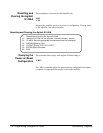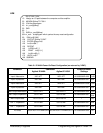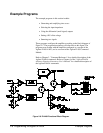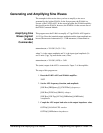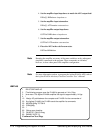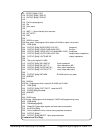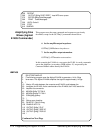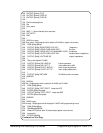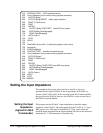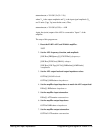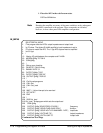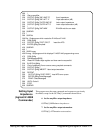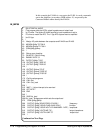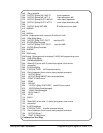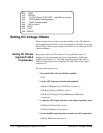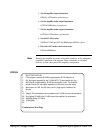
610 IF BIT(B,6) THEN !AFG requested service
620 !End of statement if error occurs among coupled commands
630 OUTPUT @Afg;""
640 OUTPUT @Afg;"ABORT" !abort output waveform
650 PRINT "E1445A errors"
660 PRINT
670 REPEAT
680 OUTPUT @Afg;"SYST:ERR?" !read AFG error queue
690 ENTER @Afg;Code,Message$
700 PRINT Code,Message$
710 UNTIL Code=0
720 STOP
730 END IF
740 !
750 !Read AMP (at sec addr 11) status byte register, clear service
760 !request bit
770 B=SPOLL(@Amp)
780 IF BIT(B,6) THEN !amplifier requested service
790 !End of statement if error occurs among coupled commands
800 OUTPUT @Amp;""
810 PRINT "E1446A errors"
820 PRINT
830 REPEAT
840 OUTPUT @Amp;"SYST:ERR?"!read AMP error queue
850 ENTER @Amp;Code,Message$
860 PRINT Code,Message$
870 UNTIL Code=0
880 END IF
890 STOP
900 SUBEND
Setting the Input Impedance
The examples in this section show you how to amplify a sine wave
generated by the Agilent E1445A. In the first program, the E1446A is a
servant of the E1445A AFG. In the second program, the E1446A amplifies
the signal from the E1445A, however; the E1446A is in the servant area of
the E1405 Command Module.
Setting the Input
Impedance
(Agilent E1445A
Commander)
This program sets the E1446A’s input impedance to match the output
impedance of the E1445A. The signal supplied by the E1445A is a 1 Vpp, 2
MHz square wave. The signal is amplified to 6.3 Vpp. Again, when the
intended output amplitude and the input amplitude are known, the amount of
attenuation (0 - 31 dB attenuator) is determined by:
2-14 Programming the Agilent E1446A Setting the Input Impedance



